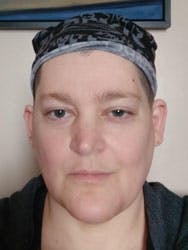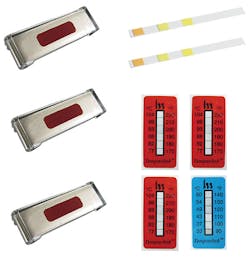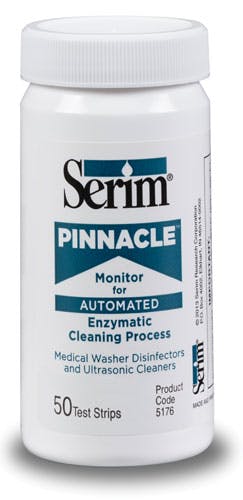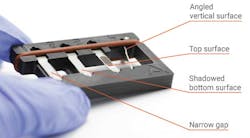How effectively central sterile/sterile processing department (CS/SPD) professionals clean surgical instruments has a critical impact on their performance and safety. In the CS/SPD a common saying is, “there is no such thing as sterile dirt.” Regardless of how thoroughly CS/SPD team members sterilize an instrument, it will not be safe for patient use if the cleaning of it was inadequate.
Cleaning is a multistep process that relies on several elements, as described in Annex P of ANSI/AAMI ST79. Variables that can impact cleaning include:
- Quality of water
- Concentration and type of detergent or enzymatic cleaner
- Acceptable washing method
- Proper rinsing and drying
- Correct preparation of items to be processed by cleaning equipment
- Time and temperature parameters
- Load capacity of the equipment
- Operator and equipment performance
Healthcare Purchasing News reached out to CS/SPD professionals and product/solution providers for their thoughts on the most important factors that influence instrument cleaning, along with advice for addressing these variables.
Factors that cause cleaning variability
Water
“First and foremost is water quality,” said Ralph Basile, Vice President, Healthmark Industries. “The fact is, water is the main solvent in breaking down organic soils from the human body. Why? Because humans are mostly comprised of water and so are the organic soils that come from us. This is why it is so important that pretreatment activities begin at the point of use (i.e., rinsing away gross debris) and preventing of those soils during transportation. If the gross debris is reduced and if the remaining soiling is prevented from drying, the water alone will wash away the lion’s share of the contamination.”
Water quality varies widely from place to place, with some locations having water that contains an abundance of dissolved minerals (hard water), and even chemicals and microorganisms that remain despite treatment efforts by municipalities. Furthermore, water quality can change depending upon the season, and can be impacted by disruptions to public water systems (e.g., water line breaks, treatment system failures).
AAMI TIR34:2014 covers the selection and maintenance of effective water quality suitable for reprocessing medical devices, and offers guidance on selecting the right water quality at each stage of processing. The report presents a four-step process for CS/SPD professionals to implement in collaboration with water maintenance and administrative personnel in order to provide optimal water for medical device processing:1
- Assessment of water quality: An accredited facility with expertise in water quality should analyze tap water to determine whether treatment is required, and if so, what type of treatment.
- Implementation of water treatment processes: Based on the assessment, personnel should ensure treatment processes are implemented to provide the type of water the facility needs for medical device reprocessing.
- Assurance of proper water quality for the various stages in medical device reprocessing: Personnel should audit medical device reprocessing areas to determine whether the correct quality water is being used for the devices being reprocessed in each area. If not, they should modify the water treatment as necessary.
- Ongoing monitoring of water quality: Where applicable, facilities should establish monitoring procedures to ensure the treated water is of adequate quality for medical devices reprocessing. Water maintenance personnel and device processing personnel should communicate effectively to ensure action is taken when inadequate water quality is detected.
Sharon Greene-Golden, BA, CRCST, FCS, Manager, Sterile Processing, Adventist HealthCare Shady Grove Medical Center, in Rockville, MD, speaks to the importance of water treatment at every stage of device reprocessing.
“We have found that water can actually be detrimental to the washer, sonic and sterilization equipment,” she said. “Bad water quality can impede the actual cleaning process of instrumentation contributing to a shorter lifespan of the instrument.”
In 2008, Green-Golden’s hospital installed a reverse osmosis (RO) system for treating water used in the CS/SPD. While the RO water is supplied to the washers and cart washers, those performing the system installation did not provide access to the treated water at the decontamination sinks.
“It becomes a problem when you have instructions for use (IFU) that say to rinse the instrument in treated water but you have none available at the sink,” said Greene-Golden. “Because we don’t have a distillery we have to pull sterile water off the shelf and bring it over to the sink to rinse the instruments. Sometimes it can take several bottles to complete the rinse.”
Cleaning detergents/agents
As the Association of Surgical Technologists (AST) points out in its Standards of Practice for the Decontamination of Surgical Instruments, there is a delicate balance between selecting a cleaning/detergent agent that will effectively clean the instruments without damaging the cleaning equipment, or the instruments themselves.2 AST offers the following ideal characteristics of a cleaning agent:
- Low sudsing/foaming
- Easily rinsed off
- Disperse organic soil
- Biodegradable
- Nontoxic
- Nonabrasive
- Effective on all types of organic soil
- Cost-effective
- Long shelf life
But selecting the “right” detergent for the instrument and equipment is only the first step. Basile says the right amount of detergent mixed with the right amount of water (at the correct temperature) is critical to successful cleaning, and says using the wrong dose of detergent is a common cause of washer failures.
“Too little detergent, and soils are not hydrolyzed and washed away,” said Basile. “Too much detergent and you get foam and cavitation of the pumps and, well, again cleaning is ineffective. So delivery of the right amount of detergent (as prescribed by the manufacturer of the detergent and the washer) is key.”
Greg Sautter, Product Sales Manager, Serim Research Corporation, says another variable that is often overlooked is the interaction between the detergent and the wash process. He explains how enzymatic detergent might work extremely well at low to moderate temperatures but is inactivated at higher wash temperatures.
“AAMI now recommends daily testing of both washer-disinfectors and ultrasonic cleaners using a cleaning verification test that monitors all factors of the cleaning process,” said Sautter. “This is extremely important to ensure the cleaning equipment is operating at optimal efficiency.”
Temperature
Basile explains that temperature plays a critical factor in the cleaning process in a variety of ways, including water temperature, detergent temperature and the temperature of washer-disinfector cycles.
Water temperature: He says proper water temperature at the appropriate time is key to effective cleaning. He explains that water temperature must be “cool” (below 110F) during the initial rinse at pretreatment in order to maximize the effectiveness of initial rinsing activities. That is because proteins (e.g., organic soil) above 113F (45C) denature/become insolvent, making them difficult to remove.
“To prevent that, and to maximize the effectiveness of initial rinsing activities, the temperature needs to remain below 110F,” said Basile. “Fortunately, this is easy to accomplish in the vast majority of settings. Just use the water from the cold-water tap or pre-packaged water that is stored at room temperature.”
Cleaning solution temperature: Basile says generally (always read the label) enzymatic detergents work best at around 50C. If the temperature is too cold the enzymes become sluggish, and if it is too hot then the enzymes are destroyed.
“Why do we care about enzymes? It is because they are key to breaking down the organic soils that are not water-soluble. There are some, such as fibrin, found in our blood. So the wrong temperature means those insoluble proteins likely remain on the instrument,” said Basile.
Thermal process: Basile explains that modern washer-disinfectors used in sterile processing departments disinfect by using a thermal process — namely, very hot water. Different brands and models of washer-disinfectors differ in their intended programming. But, at a minimum, washer-disinfectors on the market today have a thermal disinfection stage with a minimum of 180F for 1 minute.
“By the way, pay close attention to this, particularly if you are on the prep and pack side of sterile processing,” he added. “Thermal disinfection is meant to enhance your safety. Its primary purpose is to destroy the vast majority of remaining viable organisms, and make it safe for you to handle the instruments with bare hands.”
Equipment performance
In the January 2018 article, Do not trust, verify (www.hpnonline.com/not-trust-verify/), HPN covered the topic of preventative maintenance and routine testing of automated washers, disinfectors and sterilizers, and offered advice on how to prepare for and manage unexpected equipment breakdowns. Equipment performance is paramount to effective cleaning and there are a number of things that can go wrong.
“How effective would you be at handwashing dishes if you, say, did not use your hands? Not very,” said Basile. “Well same with a washer-disinfector. If the spray arms are not spinning, if the spray arms are missing, if water is not jetting out of the spray nozzles at sufficient force, the washer-disinfector will not be effective at cleaning. That is what we refer to as ‘mechanical action.’”
“When it comes to ultrasonic washers, the key mechanical action is cavitation,” he added. “Cavitation refers to microscopic vacuum bubbles created by the transducers in the sonic. It is the implosion of those bubbles that mechanically breakdown and help remove soil from the surface of the item being cleaned.”
Technician technique
A CS/SPD has the right quality water, with the right detergent at the right dose and temperature for the instrument and the cleaning equipment, and the equipment is functioning as intended. Good to go? No. It also comes down to the human factor.
According to Michele DeMeo, CSPDT, CRCST, Independent CS/SPD Consultant at MDD Virtual Consulting, the most challenging cleaning variable to overcome is technician technique.
“Following IFU is imperative and a given, but it varies across those in charge of processing tasks in how they carry out their assignments or decontamination activities,” said DeMeo. “This may not seem to be a crucial element, but it is in my experience. You have a diverse team comprised of technicians that range from fast-paced to slow and methodical, and everything in between. This factor alone can greatly impact the quality outcome of the single instrument to entire loads of processed sets.”
3 steps to cleaning success
While there are many factors that can impact instrument cleanliness, CS/SPD professionals can take steps to reduce risks and increase the chance for success. Below are three areas for consideration when cleaning up your cleaning processes.
1. Staff training
DeMeo says CS/SPD leaders must evaluate how they train diverse team members in a complex environment where individuals differ in education, background, role and experience, stating:
“Even when all other variables are in check (or not), great technique can overcome most challenges or deficits if absolutely necessary. On the other hand, when technicians are not exact and nearly prescriptive in their approach to instrument processing each and every time it can destroy any outstanding program in place. Great training and maintaining outstanding technique is the first step in good processing, even before we begin to tackle the other obligations and obstacles.”
Greene-Golden added, “Staff must be reminded on an ongoing basis that the most important part of our job is to make sure the instruments and items processed through the decontamination area are absolutely clean. Clean instruments are the first step to a true reassembly and sterilization process.”
2. Preventative maintenance
Greene-Golden recommends preventative maintenance of all systems and equipment in the CS/SPD to prevent issues from happening before they impact cleaning performance. She learned firsthand the value of preventative maintenance when she first arrived at Adventist HealthCare Shady Grove Medical Center, stating:
“Our hospital had the biggest RO tank I had ever seen. When I got here it was growing algae and the filters were almost crumbling. I found out the department had not performed the proper preventative maintenance. To address the issue, a special company had to come in, take the system down, take out the tank and then clean it – it was an eight-hour process.”
Since that time, Greene-Golden and her team have been dedicated to performing the required preventative maintenance on the RO system and other systems that impact their department’s performance (e.g., steam source for sterilization). They check the water system daily and have a company that performs preventative maintenance on a monthly basis.
“It is like I tell my grandsons about the clothes dryer — you have to check the filter and clean it each and every time before pressing the start button or it could cause a fire,” said Greene-Golden. “It is the same with the water treatment system in our department. You can’t just put in a system and let it go. It requires continuous monitoring and maintenance for it to work.”
“The monitoring of our water quality system is done daily by the staff,” she added. “We are using a product called AquaTest [from Healthmark]. This product checks the pH Level, alkalinity and hardness of the water going through our sonics and washer disinfectors. The staff is trained to not only note problems but to report those discrepancies to our facilities department. Our ROI system is checked professionally each month for any outlying issues.”
3. Monitoring and testing
“Cleaning is, in general, terribly uncontrolled in the typical SPD,” said Jonathan A. Wilder, PhD, Managing Director, Quality Processing Resource Group. “Not for lack of trying, but because there are so many variables. Water purity, water temperature, sonic performance, detergent dosing, wash cycle phase temperature and duration, wash arm obstructions, etc. add up to a lot of questions with limited answers. In order to get cleaning under control, you have to monitor and verify each of these items on a periodic basis, not just trust the endpoint measurements that cleaning indicators give you.”
According to Wilder, the “dragon can only be tamed” by a systematic approach to the monitoring and testing process. He points to AAMI TIR 34 as a valuable resource for achieving good water quality. He further recommends: “Periodic tests of detergent dosing, washer performance profiling by use of multiple indicators, comparison of indicators and NOT taking the one that is easiest to clean. Daily and weekly checks of the washers for blockages in flow are a start on this. Once these issues are in spec, you can then start to optimize your washer cycle to get things really clean.”
Below is a sampling of testing and monitoring products available on the market today.
Healthmark’s washer test kits include all the parameter tests a CS/SPD needs to ensure its washer-disinfector or ultrasonic cleaner is functioning properly. The kits include thermometers, water quality test strips, cavitation test (for sonics) and organic soil cleaning indicators. They also include a complete guide to inspection and testing. Healthmark now has a cloud-based recording and documentation system called ProformanceQA.com, which helps staff carry out and document the important functions related to cleaning verification.References
1. https://my.aami.org/aamiresources/previewfiles/TIR34_1409_preview.pdf
About the Author
Kara Nadeau
Senior Contributing Editor
Kara Nadeau is Sterile Processing Editor for Healthcare Purchasing News.






